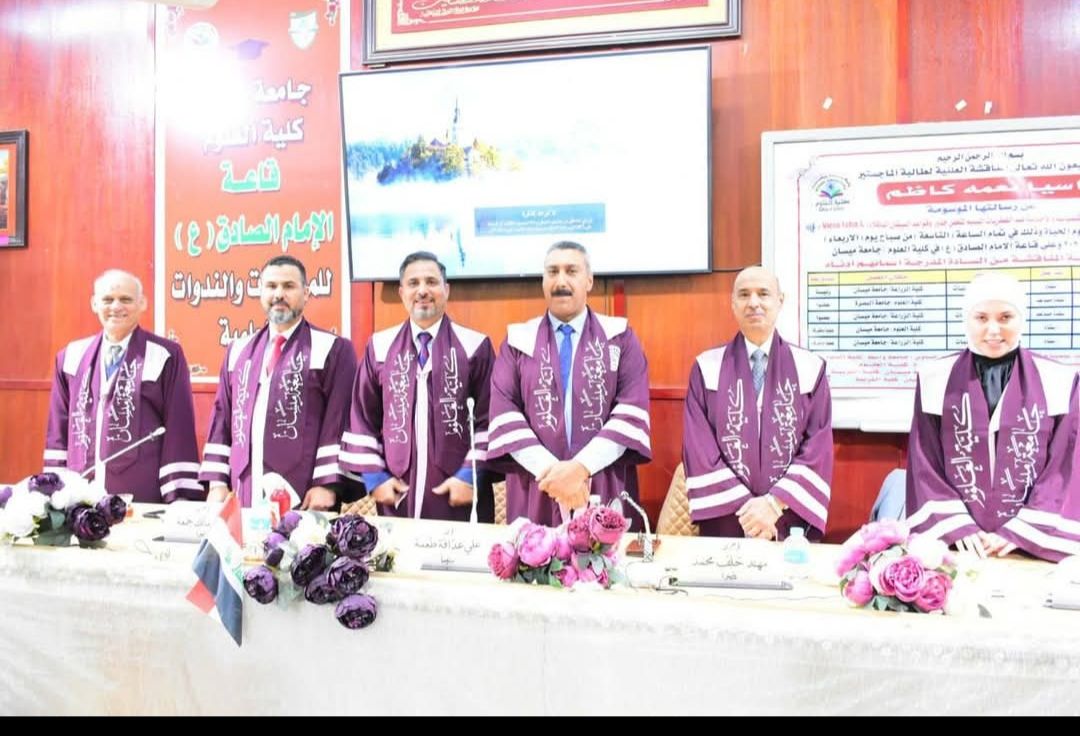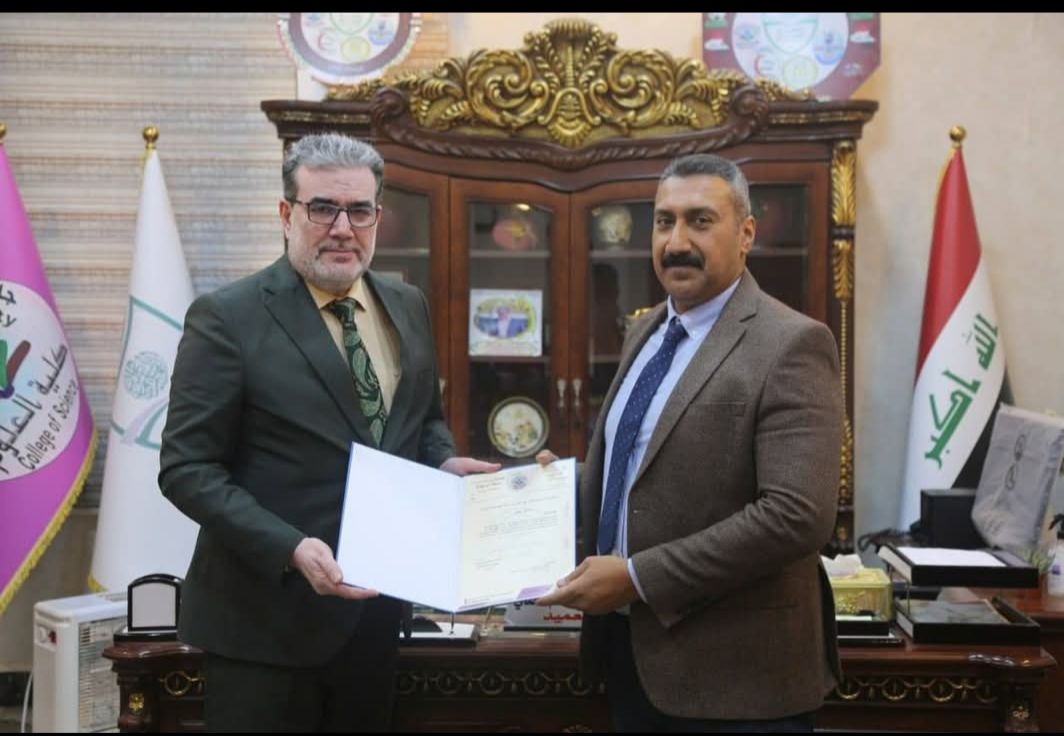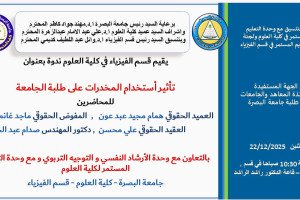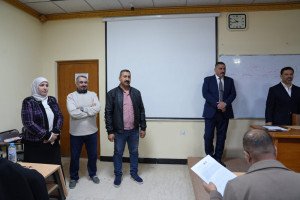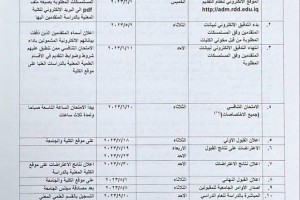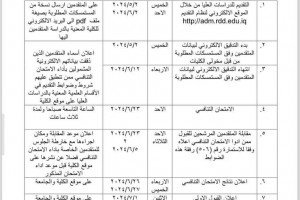
Assistant Professor Dr. Muhannad Khalaf Muhammad Amin, lecturer in the Department of Life Sciences, College of Science, University of Basra, participated as a member of the discussion committee for the thesis of the student Asia Nima Kazim from the Department of Life Sciences, College of Science, University of Maysan, entitled: Evaluation of the efficiency of some chemical and biological factors against fungi that cause rotting of the roots and stem bases of fava beans Vicia faba L. .
Dr. Muhannad Khalaf explained that the thesis included several aspects, as it isolated and diagnosed fungi from the bases of the stems and roots of the fava bean plant, where they were diagnosed phenotypically and molecularly, as well as testing the pathogenicity of some isolated fungi and studying the effect of the chemical pesticide Beltanol on the radial growth of the isolated fungi, in addition to studying the antagonistic efficiency of the fungus Trichoderma longibrachiatum and the bacteria Pseudomonas fluorescens, and 14 types of pathogenic fungi were isolated, six of which were recorded for the first time in Iraq as pathogenic to fava bean roots. The study concluded that the roots and bases of the stems of the fava bean plant are infected with more than one pathogen, which represents the main causes of root rot disease. It was also found that the fungus Rhizoctonia solani is the most common and frequent fungus. Six species were recorded and identified for the first time on the roots and bases of faba bean plants. The two biocontrol agents Trichoderma longibrachiatum and Pseudomonas fluorescence and the pesticide Beltanol have high ability to inhibit the growth of the fungus R.solani Fusarium solani. The integration of the two biocontrol agents Trichoderma longibrachiatum and Pseudomonas fluorescence had an effective effect in reducing the incidence of root and stem rot disease in faba bean plants.
